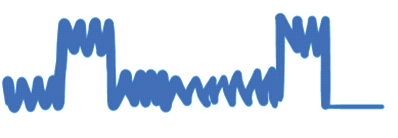Perinatal Asphyxia - NEET PG Pediatrics
May 22, 2023
Navigate Quickly
Pathophysiology
Signs of Hypoxia at birth include:
Diagnostic Criteria for Severe Birth Asphyxia
Staging of Perinatal Asphyxia:
Treatment of HIE
1. Supportive Care
2. Latest Rx Modality for neonates with Moderate to Severe HIE
3. Neonatal Seizures treatment

Lack of blood flow or gas exchange to or from the fetus in the moments just before, during, or after childbirth is known as perinatal asphyxia. Due to decreased blood flow and/or oxygen to a fetus or child during the peripartum period, perinatal hypoxia can cause severe systemic and neurologic consequences.
Read this blog on important topics for pediatrics and get a taste of the best NEET PG coaching available online.
.jpg)
Pathophysiology
When placental blood flow is interrupted, fetal hypoxia, hypercarbia, and acidosis occur, which is the pathophysiology of asphyxia. There are both circulatory and non circulatory adaptation mechanisms that let the fetus survive suffocation and maintain the function of critical organs. These protective mechanisms stop working in response to severe and/or protracted insults, resulting in hypoxia ischemic damage, which causes cell death by necrosis and apoptosis. The most severe long-term effect of prenatal asphyxia is permanent brain damage. The mechanisms of injury, including their degree and length, as well as the brain's developmental maturity, have an impact on the injury's location and severity.
Diagnostic Criteria for Severe Birth Asphyxia
All of the following are required
- Apgar Score: 0-3 for > 5 minutes
- Severe acidosis (cord blood pH < 7.0)
- Presence of any clinical evidence of CNS dysfunction
- E.g.: Tone abnormalities, seizures, changes in sensorium etc.
- Presence of any evidence of dysfunction of at least 1 organ other than CNS
- Example
- Renal: Acute Tubular necrosis, renal vein thrombosis
- Heart: myocardial dysfunction, CCF, arrhythmias
- Pulm: pulmonary hypertension
- GIT: NEC
- Hemat: coagulation abnormalities
- Metabolic: hypoglycemia, acidosis
- Subcutaneous fat necrosis
Staging of Perinatal Asphyxia:
- Sarnat and Sarnat
- Levene's staging
- Thompson score-Maximum score = 22.Score of ≥ 15 is suggestive of poor outcome
|
Parameters |
Stage 1 (Mild HIE) |
Stage 2 (Moderate HIE) |
Stage 3 (Severe HIE) |
|
1. Level of consciousness |
Hyper alert/irritable |
Normal/depressed (lethargic) |
Comatosed |
|
2. Tone |
Normal |
Mild hypotonia |
Severe hypotonia |
|
3. Moro’s reflex |
Exaggerated |
Normal/depressed |
Absent |
|
4. Seizures |
Not seen |
Present |
Not seen |
|
5. Autonomic involvement |
|
|
|
|
6. Prognosis |
|
|
|
Also Read : Diaper Rash: Causes, Symptoms, Types, Diagnosis, Treatment, Prevention and Complications

Treatment of HIE
1. Supportive Care
- NICU admission
- IVF
- Maintain euglycemia & normothermia
- Monitor the baby
- Tool used for bedside monitoring of neonates with HIE → aEEG (Amplitude Integrated Electroencephalography)

2. Latest Rx Modality for neonates with Moderate to Severe HIE
- Therapeutic Hypothermia
- Temp. maintained is 33.5° c –34.5° c
- Preferred in babies > 35 weeks gestation
- Used in 1 4-6 hours of life
- Decreases mortality and neuromorbidity
- Due to some side effects, done at a tertiary care center.
3. Neonatal Seizures treatment
- DOC: phenobarbitone
- 2nd line: levetiracetam
- Mc type: subtle seizures
- Mc cause: hypoxia
- Type with best prognosis: Focal clonic seizures
- Types with worst outcome: myoclonic seizures
- Preferred initial CNS imaging: Transcranial ultrasound (cranio sonogram)
This is everything that you need to know about perinatal asphyxia for your PEDIATRICS PREPARATION. For more interesting and informative blog posts like this download the PrepLadder App and keep reading our blog!

PrepLadder Medical
Get access to all the essential resources required to ace your medical exam Preparation. Stay updated with the latest news and developments in the medical exam, improve your Medical Exam preparation, and turn your dreams into a reality!
Top searching words
The most popular search terms used by aspirants
- neet pg pediatrics
- NEET PG Preparation
PrepLadder Version X for NEET PG
Avail 24-Hr Free Trial
